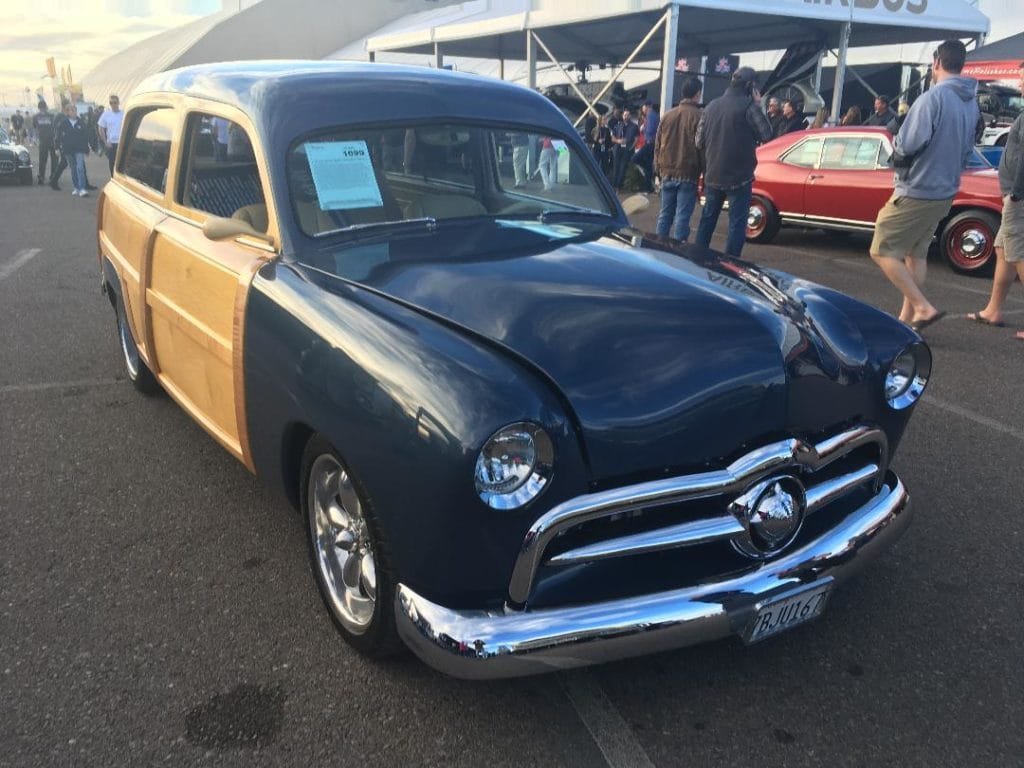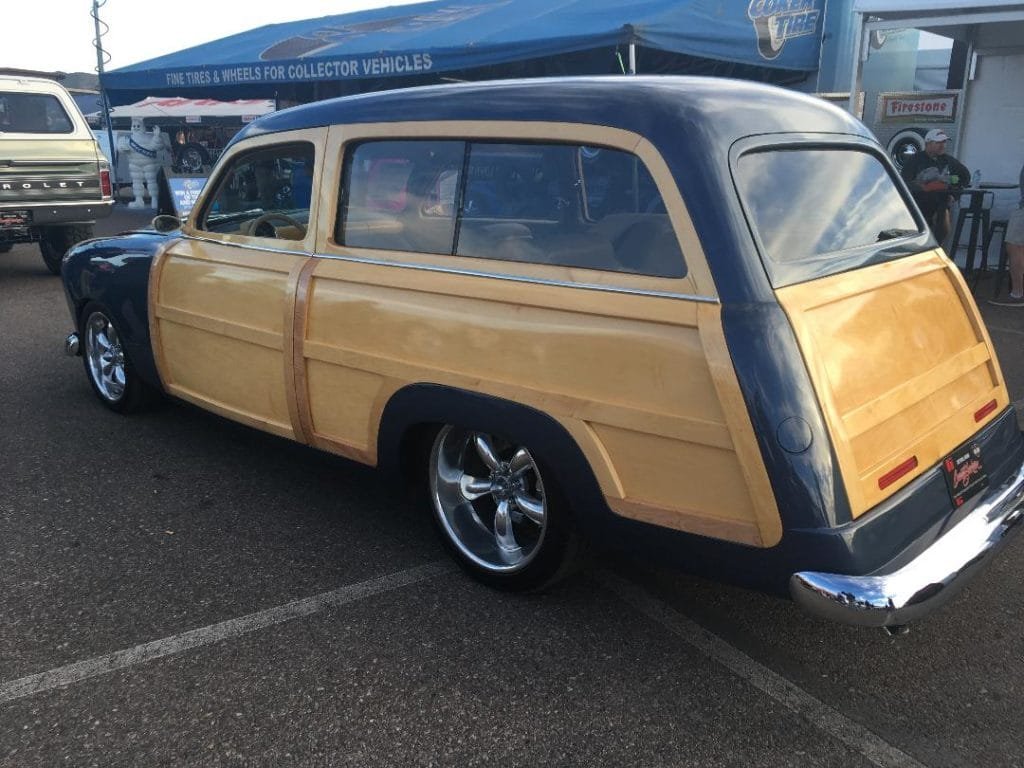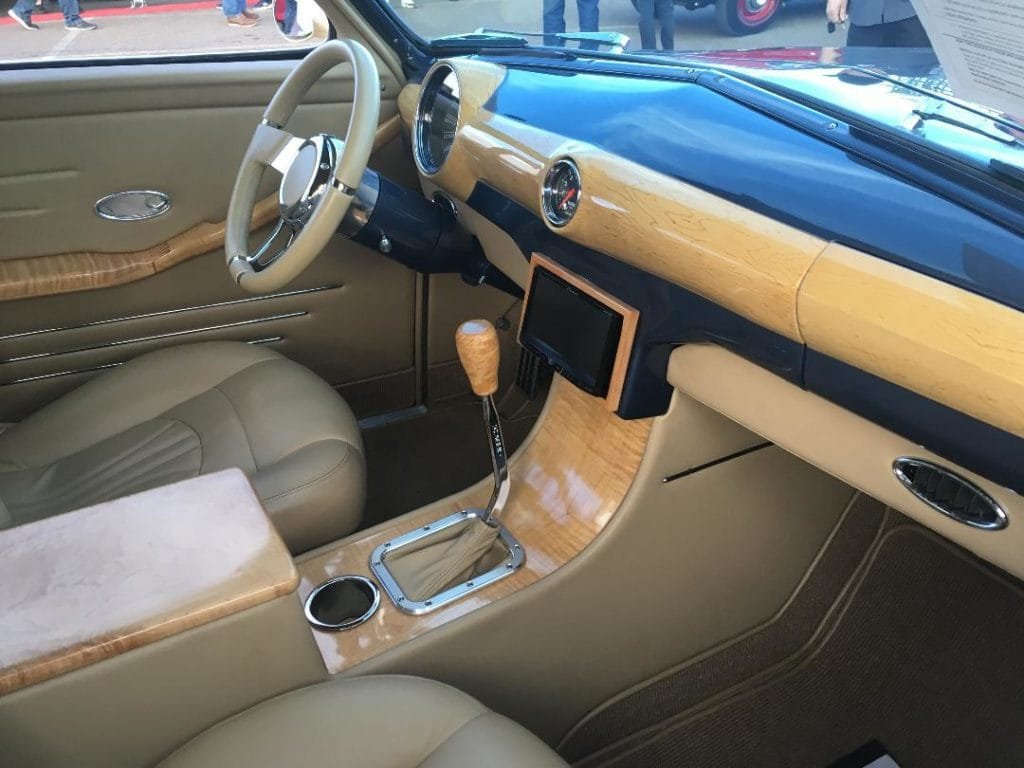Featured is a beautiful 1949 Ford Custom Country Squire Woodie Wagon. Here is a fine example of a real late 1940’s woodie model at a time that woodie car production was winding down. Ford was the last major manufacturer still producing a “woody” with real wood. It was the most expensive Ford you could buy. Woody wagons were a significant part of American automobile history. While the idea of woody automobiles to a bit of time to catch on, Ford jumped in with both feet in the 1920’s.

1949 Ford Restyling
The 1949 Ford’s represented the first restyling since the end of the war and it was important for Ford to produce a winner.
The 1949 models debuted at a gala at the Waldorf-Astoria Hotel in New York City in June 1948. The year 1949 was a critical one for the Ford Motor Company and in some ways was a do or die year for the company.
The 1949 Ford restyling was completely new, A design totally changed from the year before and one with a very modern look. The 1949 Ford was nicknamed the “Shoebox Ford” because of it’s slab sided ponton design.
The End of Real Wood Paneling on Automobiles
Wood paneled cars signified luxury at one time. In the 1920s, cars with wood paneling were mostly done by custom shops. This was a time when most things were made of wood. Boats and even airplanes were made of wood. The resource was readily available and relativeley easy to work with. Henry Ford bought 400,000 acres of forest land in Michigan in 1920 and shipped the wood out to be milled and assembled until they began milling themselves in 1934.
By 1947, woodies had started to become unprofitable because of the labor needed to produce them. The demand for woodies continued to decline rapidly in the 1950s because the wood panels required a lot more maintenance than steel bodies. In addition, wood could add an extra two to three hundred pounds to a vehicle thus cutting into performance.
The wood-bodied wagon had largely seen its end by 1949, when most American car companies brought out their newly redesigned postwar models; Mopar models lingered until 1950. Only Ford (and by extension, Mercury) held fast. They were the innovators in the field, after all, and they held on to the dream of the wood-bodied wagon longer than anyone else. Ford made 29,017 Country Squires and 3,812 Mercurys for the year, perhaps to use up the last stocks of wood.
The last production American station wagons constructed with real wood were the Buick’s 1953 Super Estate Wagon and 1953 Roadmaster Estate Wagon.
1949 Ford Country Squire Woodie Wagon Specifications
Two engines were available on the 1949 Ford Wagon. These included a 225 cubic inch straight six, and a 239 cubic inch V-8. Horsepower was 95 and 100 respectively.
Transmissions were three and four speed manuals.
Brakes were four wheel hydraulic drums.
Vehicle dimensions included a 114.0 inch wheelbase, 208.0 inch overall outside length, and a 71.7 inch width. Vehicle curb weight about 3,700 lbs.
Related Auto Museum Online articles are found on the links below…
References for this article included…..Ford Motor Company: The Greatest Corporate Turnaround In U.S. History by Gerhard Geyer…..The Complete History of Ford Motor Company by authors Richard M. Langworth and The Editors of Consumers Guide….The Ford Century by Russ Banham.
The 1949 Ford Custom Country Squire Woody Wagon Collector Car
The Woody Wagons remain as popular as ever with collectors. This includes both fully restored excellent examples and those requiring restoration to varying degrees.
You may see several different types of woody (real wood, not vinyl wood appearance) models for sale. Many of these that are in excellent restored condition with a high degree of originality may have current asking prices in a range from $50,000 to $160,000 depending on exact model.
The vehicle featured in this article sold at auction for $132,000.
(Article and photos copyright Auto Museum Online)


